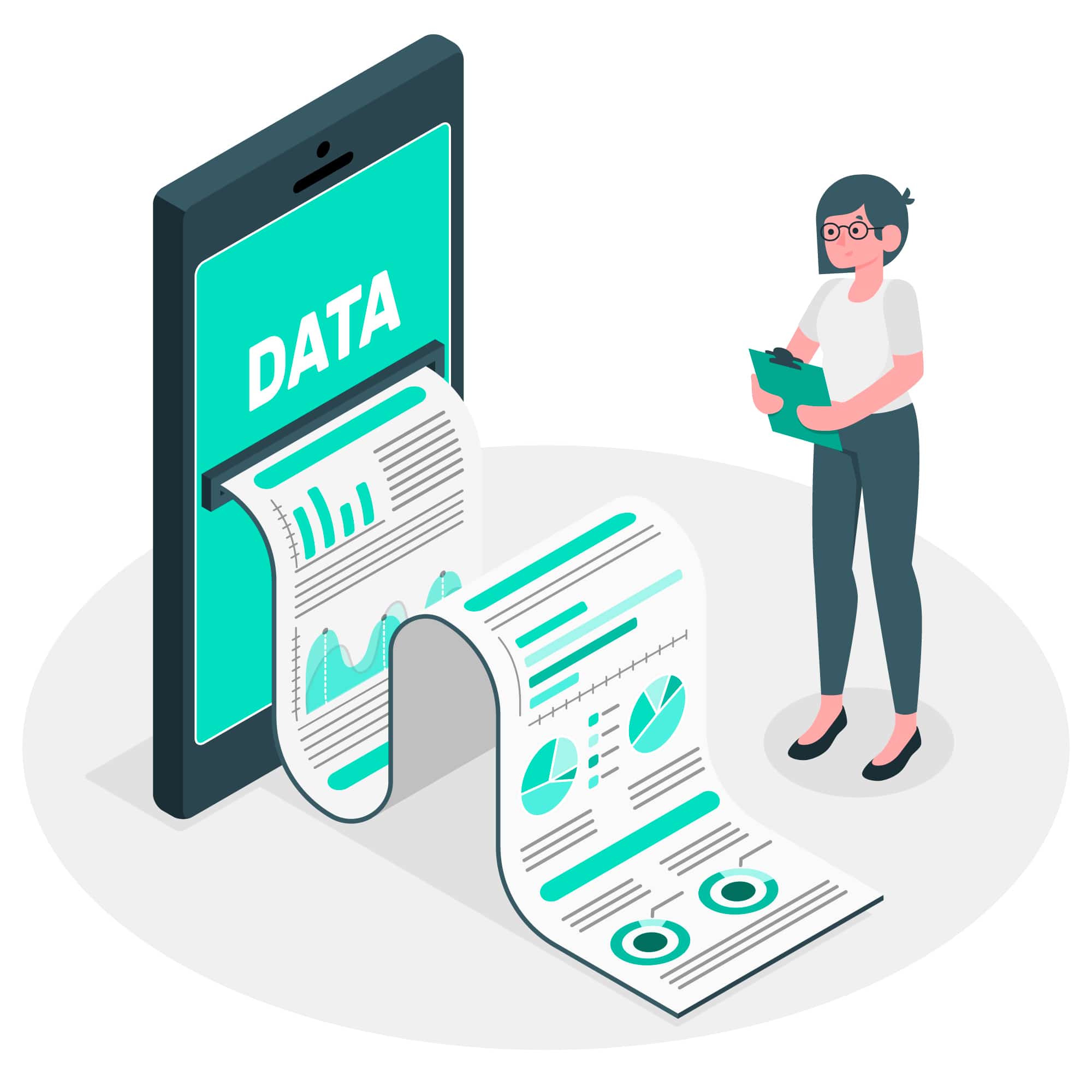Data and Data Analytics
August 3, 2021
There is no question that data is a valuable business resource. In a previous blog, we discussed Eight Best Practices for Data Management, but today we are going to go a little more in-depth. We will discuss how you can analyze and apply your data to improve your business.

Analyzing data starts with defining what data is and how it’s described. Here are some of the basic terms that help build a framework for talking about data.
Data is defined as facts or information, often numerical, that is used for reference or analysis.
Data Analytics is the process of inspecting, processing, or analyzing data allowing us to find connections, useful information, or to draw conclusions about that data.
Qualitative Data is based on observable things that are not measured. It is descriptive and conceptual.
Quantitive Data can be counted, measured, or expressed with numbers.
Determining if data is qualitative or qualitative is frequently the first step in defining and organizing data. Qualitative and quantitative data certainly have different applications. For example, qualitative survey feedback about your hiring process may help you build a more accommodating process that improves employee satisfaction. Alternatively, quantitative statistics about how many people you hire throughout the year may help you get insight into the seasonality of your business, thus plan better marketing strategies to attract more candidates when you need them. Both types of data are important for getting a comprehensive picture of your business, and neither is more important than the other. Ideally, you will want to be gathering both quantitive and qualitative data across your organization.
Good analytics starts with good data. It doesn’t matter how advanced your analytics are if you’re using incorrect or incomplete information. Some key features of good data include:
- Accurate – correct & precise.
- Complete – all possible or necessary data is present.
- Appropriate – the correct data points have been collected for the type of analysis required.
- Relevant – data is up-to-date or, when analyzing past data, falls within the specified timeline of study.
- Structured – data is stored in an appropriate, standardized format that allows effective analysis.
- Valid – data is derived from reliable, appropriate, and authentic sources
- Clean – data is appropriately labeled and necessary duplicates or stray metrics have been removed.
Having clear goals for what you want to gain from your data is the first step in any data management strategy. Are you trying to improve sales using customer buying analytics? Instead, maybe you’re interested in tracking health trends to determine the best time to schedule preventative screenings. Knowing what processes you want to improve or what you want to learn from the data (best time of day to send an email, which customers are most engaged etc.) will help you with step two – determining what data you need to collect.
Descriptive Analytics: Present or Past Focused, Less Value & Complexity
Describing or summarizing data using business intelligence (BI) tools to better understand what is going on or what has happened. Descriptive analytics give you the big picture of what is happening, typically through data visualization.
With a focus on identifying patterns from past or current data, this is the most common form of analytics and includes things such as:
- Sales data over time
- Past energy or resource usage
- Survey, test, or questionnaire results
- Marketing engagement such as clicks, email opens, social media likes, etc.
Diagnostic Analytics: Past Focused, Moderate Value &Complexity
Focus on past performance to define what happened and why. Analytics tools are often used to display this type of data in a BI dashboard. Diagnostic analytics help you understand why something is happening.
Diagnostic analytics often build connections by comparing past data. Examples might include:
- Determining how last year’s flu season affected vacation rental bookings
- Analyzing employee performance in relation to salary
- Tracking Incident or crime reports and how they affected an area’s home prices
Predictive Analytics: Future Focused, High Value, and Complexity
Emphasizes defining possible outcomes through statistical models and/or by applying machine learning tools. With predictive analytics, you are trying to forecast outcomes and understand what is likely to happen in the future.
Predictive analytics is a powerful tool for improving outcomes and reducing risk. Some common use cases include:
- Predicting customer preferences through social media engagement and then delivering targeted ads based on that data
- Predicting vulnerabilities in your security system, firewall, or protocols that require attention
- Determining resource allocation based on seasonality such as staffing, product stock, marketing budget, etc.
Prescriptive Analytics: Future Focused, Highest Value & Complexity
This type of analytics takes it one step further by using predictive analytics to recommend appropriate actions or strategies. By using advanced algorithms and AI tools, predictive analytics helps you decide what to to do next.
This form of analytics is the most complex, but also the most useful. Prescriptive analytics analyzes predictive analytics to generate a plan of action and can help by:
- Automatically generating an employee schedule that considers availability and performance to ensure the right people are available at the right time.
- Improving patient care by identifying at-risk individuals for specific conditions or injuries so they can be proactively tested or guided through lifestyle changes.
- Suggesting maintenance schedules for equipment based on frequency and type of usage.
Processing your data within the framework of these four types of analytics helps you understand how data can be used for decision-making and in what ways. It also offers insight on areas where you may be lacking data. Some businesses are so focused on descriptive analytics that they haven’t explored predictive or prescriptive analytics. This unfortunate oversight ignores how these types of analytics can help businesses plan for the future. When you only rely on descriptive or diagnostic analytics, it’s easy to make missteps by becoming too dependent on your business instincts or past trends.
The field of data analytics is constantly advancing, and new tools are making high-quality analytics available to businesses at every level. Understanding how each type of analytics can inform and improve key metrics at your organization is a powerful first step to harnessing your data. Whether you are trying to save lives and improve patient care, or simply build your brand’s reputation and engagement, data is quickly becoming the future of decision making. Indeed, for many industries, good data is becoming essential to staying competitive and that isn’t likely to change any time soon.
How can DOMA help?
Business intelligence tools are a great way to begin leveraging your data. If you would like to learn more about how you can apply business intelligence and data automation to your workflows, then DOMA is here to answer any questions you might have.
About DOMA- Powered by Tech, Driven by People
DOMA Technologies (DOMA) is a software development and digital transformation company whose mission is to change customer lives by lightening their workload through faster and more targeted access to their data. Since 2000, our team of 200+ experts has helped businesses navigate all aspects of the digital world. We are a dedicated strategic partner for the federal government and private sector clients at every stage of their unique digital transformation journey.

Author:
Danielle Wethington
Director of Communications
Sources:
Hyper Automation
What is hyper automation? Find out out about how AI tools can help you get more out of your data.
Recent News

DX Engage Achieves FedRAMP Ready Status

Data-Driven Sustainability for a Healthier Future

Humanizing Healthcare

